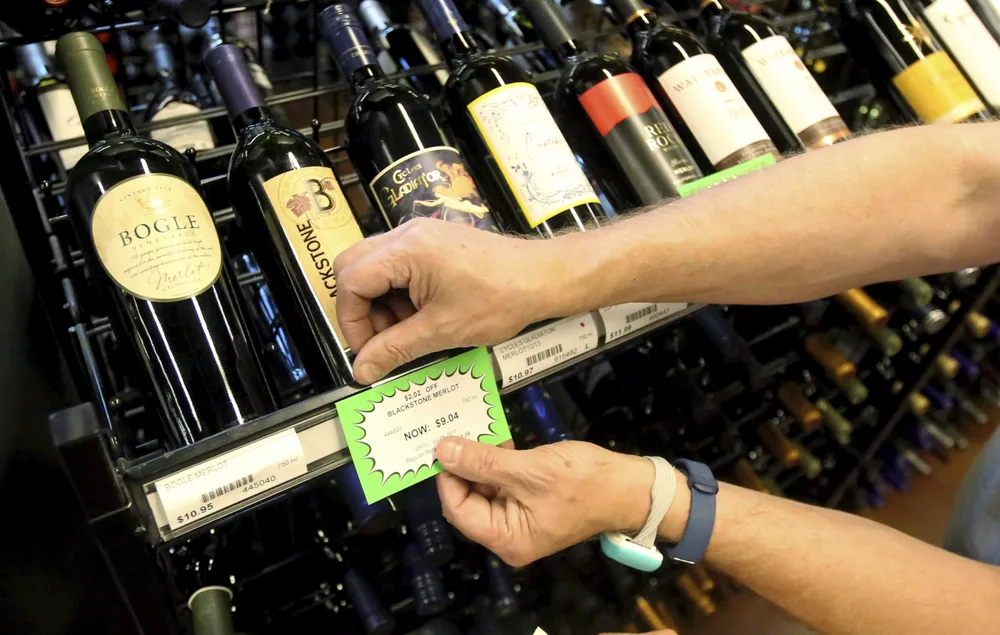
The Government wishes to aim towards economic efficiency for resource allocation and more competition; social efficiency for meeting necessary needs of healthcare; and for increasing the budget revenue. However, all this is a complex task with multiple perspectives to deal with and policy implications that need urgent attention.
Market for alcohol drinks
The beer industry in Vietnam has experienced strong growth in recent decades. Among some well-known brands are Hanoi beer, Saigon beer, Vida, Ha Long, Huong Son, and Dai Viet beer, besides a number of brands of foreign-invested wineries and beer companies. The beer and alcohol industry plays an important role in promoting growth and creating jobs with the average number of employees in the industry in the period 2010 to 2020 accounting for about 80,000 workers. The industry also contributes to the state budget from the brewery's earnings with around VND 50,000 bln to 56,000 bln annually and has a positive spillover effect on many other areas in the supply chain such as agriculture, logistics, biochemistry, and the packaging industry.
The domestic wine and beer market has three main segments. The popular segment with moderate and low prices on mainly Vietnamese brands. The more popular high-end and high-priced brands which are mainly the world's oldest brands imported into Vietnam or manufactured by foreign-invested enterprises. There are also self-produced or smuggled and tax-free varieties that are subject to quality control. According to current statistics in the beer market, about 80 percent of consumption is for popular beer. According to the report of CIEM for 2020, the tax loss on self-produced alcohol is over USD 750 mln.
The need to consume beer and wine or any alcoholic beverage is very real in the lives of all classes of society. Excessive use of alcohol can lead to many undesirable and even negative consequences on health and safety and social stability. But this product also creates supply and demand for production and consequently creates more jobs and increases the budget revenue. This is the reason for the introduction of the Special Consumption Tax (SCT) to prevent the harmful effects of alcohol.
This policy has multiple objectives for effectiveness and efficiency according to economic principles. SCT is important, but not everything. We need other measures such as communication and medical care, anti-smuggling measures, and a ban on counterfeit goods. The effectiveness depends on the policies on targets from different social groups. Moreover, the balance here is a dynamic balance, with timing related to the ups and downs of production and business, high and low budget revenue, or flow of income.
Methods of taxation
Traditionally, there are three main methods of taxation. First is the relative tax by applying a percentage tax rate such as on turnover. Second is the absolute tax, applying the absolute rate per unit of product. Third is the mixed tax, applying both relative and absolute taxes. Each method has its own advantages and disadvantages. Usually, a relative tax ensures better resource allocation efficiency, which is an automatic valve that adjusts to inflation, and suitable for developing economies like Vietnam because there are big differences in the selling price of alcoholic beverages. Absolute tax is more suitable for developed countries because alcohol products have similar selling prices and quality standards.
So far, there have not been many in-depth studies on the suitability of tax rates and excise tax methods for beer and alcohol in Vietnam, apart from the two most recent related studies, namely, "Study on the Special Consumption Tax System" in November 2022 by PwC on tobacco, and "Report on quantitative assessment of the impact of excise tax on the alcoholic beverage industry" in May 2022 by CIEM. According to these two studies, in the long-term Vietnam should gradually follow international practices and shift from relative tax to mixed tax and then absolute tax.
However, in principle, mixed tax or absolute excise tax will increase the relative price of the popular product lines compared to the high-end segment. Therefore, if the tax is collected by the absolute or mixed method, it will put great pressure on low-priced common products, affecting the production and competitiveness of Vietnamese brand alcohol producers. With incomes still low in many segments of the population, higher prices could lead to a strong shift of consumption in the informal or illegal sector. At that time, both people's health and budget revenue could suffer a worse impact.
With consideration of the effects of policy objectives, the current situation and characteristics of Vietnam's beer and alcohol market, as well as by known studies, Vietnam should maintain the method of calculating the relative excise tax and not adjust the excise tax rate on alcohol, especially beer, until 2025. The relative excise tax rate may increase in 2026, by about 5 percent to 10 percent.
In addition, it is necessary to carefully study the supply and demand segment in the beer and alcohol market and Vietnam's socio-economic conditions as well. The process of implementing national development goals for 2030 and 2045, and scenarios of applying relative, mixed, and absolute taxation methods need more thought. On this basis and taking into consideration international experience, by about 2030 Vietnam could possibly apply a mixed excise tax for alcoholic drinks as by then the country could achieve the status of a high-middle-income country.




















